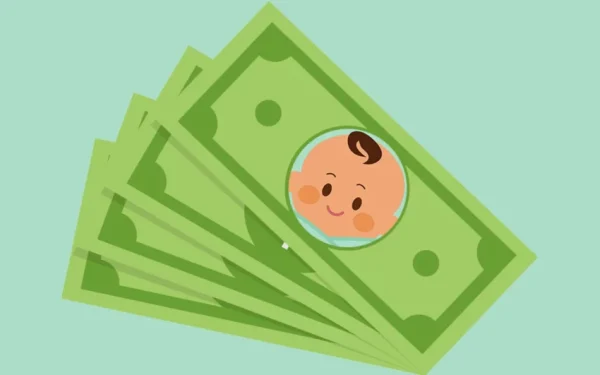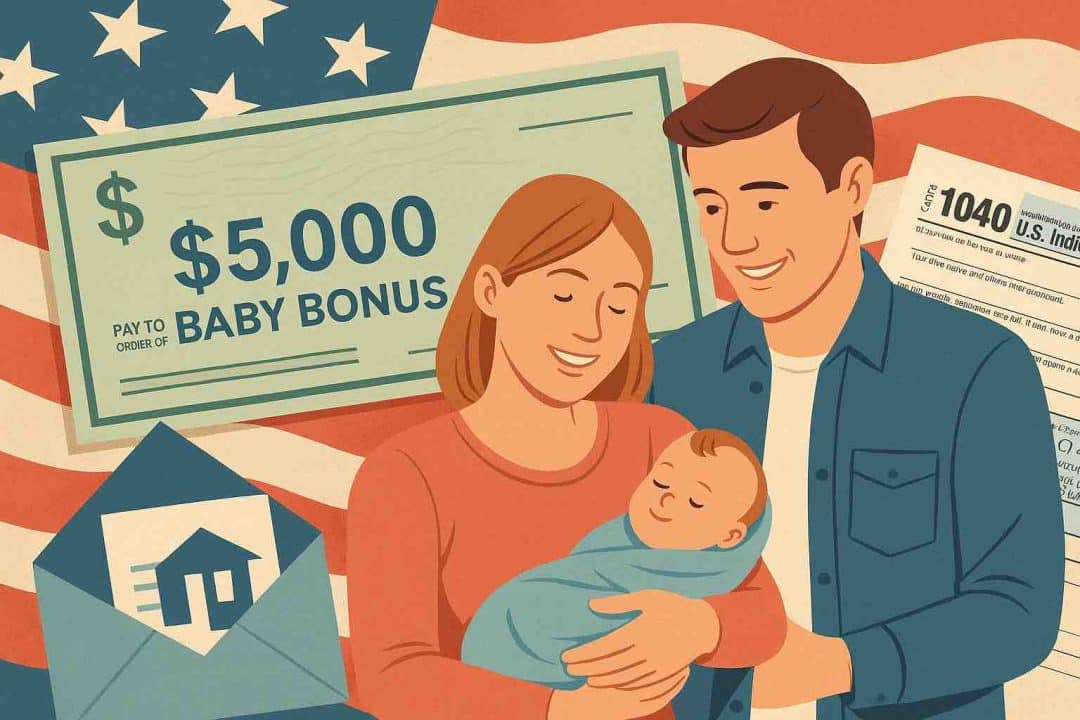Countries facing or having faced issues with low fertility rates have adopted various policies to aid in the decrease, such as the baby bonus. Australia, Singapore, and Canada are well-known countries that have implemented a baby bonus, where families receive a direct payment upon welcoming a new child. A common theme among countries that introduced or considered introducing it was a significant increase in birth rates. A problem in 2001 for Australia led to the Treasurer, Peter Costello, introducing the baby bonus to increase fertility rates, boost the Australian population, and alleviate the financial burden for new parents. It granted $2,500 in annual tax cuts for parents with newborn babies, later amended to $3,000 in 2004, and subsequently increased. It has been successful, reaching a peak in 2008, when the rate increased from 1.7 to 2.0, resulting in a surge of births across the decade. While in Singapore, it was introduced by then Prime Minister Goh Chok Tong in 2000, although it was implemented in 2001.  It got labeled the Child Development Co-savings Scheme, with a plan to boost fertility rates and encourage the desire to have babies amongst married couples. The government set up the Children Development Account, CDA, for married couples to have more than two children. Eligible children can receive up to $6,000 for a second child and $12,000 for a third child. From its original introduction to its current implementation, it has undergone enhancements, and Singapore continues to have its version of the baby bonus to this day. In Canada, the Family Allowance was introduced in 1945, a version of the baby bonus, following an attack on Quebec and political disputes among parties. Canada’s Prime Minister George Drew referred to Quebec as “one isolationist province,” which in turn led people to believe that Conservatives were opposed to social welfare, and the province where the baby bonus originated. It was paid to mothers in families as well as to fathers.
It got labeled the Child Development Co-savings Scheme, with a plan to boost fertility rates and encourage the desire to have babies amongst married couples. The government set up the Children Development Account, CDA, for married couples to have more than two children. Eligible children can receive up to $6,000 for a second child and $12,000 for a third child. From its original introduction to its current implementation, it has undergone enhancements, and Singapore continues to have its version of the baby bonus to this day. In Canada, the Family Allowance was introduced in 1945, a version of the baby bonus, following an attack on Quebec and political disputes among parties. Canada’s Prime Minister George Drew referred to Quebec as “one isolationist province,” which in turn led people to believe that Conservatives were opposed to social welfare, and the province where the baby bonus originated. It was paid to mothers in families as well as to fathers.
Additionally, to focus on the United States, throughout American history, various programs have been established to aid families, including the Social Security Act of 1935, the Child Tax Credit (CTC), and the Family and Medical Leave Act (FMLA). However, none of these programs have directly aimed to provide financial assistance to families only after the birth of a child.
As of 2024, the fertility rates in the United States have reached a historically low level, dropping 3% from 2022 for women ages 20-24, to 55.4. From what is seen, Gen Z or early Millennial women are choosing not to have children. This, in turn, has caught the attention of the Trump Administration, which is seeking ways to reverse the decline in the birth rate. His administration began to test the waters by introducing a proposal for a $5,000 baby bonus. This includes giving mothers the amount after they give birth in cash and government-funded classes on menstrual cycles. However, it is essential to note that the baby bonus is not a direct payment or bonus but rather a proposed advance on the previously mentioned Child Tax Credit (CTC, where families had the option to opt in to receive the $5,000 after the birth of the newborn. The amount would then be recouped, as there will be a reduction in the annual child tax credit, currently $2,000 per year per child, over the next 10 years. This has resulted in the comical joke of naming President Donaland Trump “fertilization president,” where he commented that he didn’t mind the nickname. This plan is still in development, and there are no guarantees that it will be approved.
The baby bonus is seen to have two very strongly opinionated sides on the implementation of the policy: the Pro, or individuals who support the idea, and the Con, or the critics of the plan, who are considered to be pro-women advocates. The pro side can be viewed from various perspectives, including its political feasibility, the utilization of existing programs, the belief that it could slightly increase birth rates, the flexibility it allows in spending, and its non-gender-specific intent. On the other hand, the con perspective includes the belief that the baby bonus does nothing for paid leave or children reform, could put pressure on low-income women to have children, favors families who already qualify for tax credits, and ignores the gendered reality of motherhood and caregiving.
The supporters of the baby bonus can be seen as advocating for the idea that it provides immediate support for new parents, as newborns are costly at birth. This can be seen with the expenses such as diapers, hospital bills, formula, car seats, cribs, and clothing. Caring for a newborn is financially demanding for parents, as they often have to repurchase childcare supplies for their children or purchase new clothing as the child grows rapidly. With a $5,000 infusion, the parents can be cushioned by the brutal hit they have financially in the baby’s first year. The bonus additionally creates flexibility without restrictions, as parents could use the money for whatever is necessary, such as housing, transportation, or healthcare. Unlike the Special Supplemental Nutrition Program for Women, Infants, and Children, or WIC, and the Supplemental Nutrition Assistance Program, or SNAP, the $5,000 isn’t limited to food or specific purchases.
Furthermore, they appreciate the idea because it involves no new government spending, as there is no direct benefit, but rather an advancement on existing credit. It wouldn’t raise the deficit and would make it politically easier for conservative lawmakers. Although it hasn’t been passed fully in the United States, other countries have proven that it increases the population, so why wouldn’t an increase in birth rates be any different? As U.S. birth rates have been declining, there has been a notion that implementing financial incentives will encourage families to have more children, particularly among middle-income earners. The baby bonus has especially gained support as it could help cover unpaid leave among mothers, since the United States lacks a nationally paid maternity leave program, unlike Sweden, Lithuania, Estonia, Iceland, Norway, Spain, Japan, and Canada. The financial cushion the bonus brings could help families to survive weeks after the birth of their children without pay. While there is finally support for the baby bonus, which is entirely voluntary and optional, if there is anti-support for the bonus, it’s just as easy to opt out of it and not receive the money. The option for families not to take the advance is available for those who do not need it based on their financial situation.
Taking the critics of the baby bonus into account, they argue that the financial cushion that it creates is not “new” money but rather a loan against future tax credits and not an actual bonus. Instead of helping families, it will harm them in the future and create less support later on as children grow and become even more expensive by creating a “future penalty” trap for low-income families. This is seen by the long-term oversight overlooked by Republicans of the growing cost of having and raising children by ignoring readily available policy solutions. NBC News reports a quote by Rep. Rosa DeLauro, an 18-term Democrat from Connecticut and a leading proponent of a federal paid family leave program statement that, “If you want to encourage families to have children and be serious about it, then you would work to lower costs, build economic security for families.” seen through the potential for a long-term financial strain on families by losing $500 a year from a tax refund for 10 years. This could lead to side effects, including reducing a family’s ability to save money, undermining financial planning, and affecting families during years when the child is in any form of care, such as schooling or daycare. This, in turn, created a debt-like burden without protection, akin to an actual loan, which offers no forgiveness or recognition.
Examining the social aspect of the baby bonus reveals that it fails to address systemic problems for women, as it does not provide paid parental leave, affordable childcare, or access to healthcare. Women are put into a position to disproportionately bear childcare costs and unpaid labor because a one-time check does not aid or fix any of the already existing gender segregation that appears in society, such as the motherhood wage gap. This puts pressure on vulnerable women as it’s marketed to benefit women instead of revealing that it functionally acts as an incentive to have children without offering long-term support. The baby bonus will affect single mothers, women of color, and low-income families more directly than anything. Those who oppose it fear that it exploits economic desperation instead of empowering a choice for women. More than anything, the bonus is a gender blind policy as it does not recognize that childbirth and postpartum care are gendered experiences and that unpaid caregiving is majority by women. It ignores the emotional and physical costs that go beyond financial stress that women are troubled with as a result. It affects families and mothers more than anything, as it’s based on unequal access, since it’s a continuation of the Child Tax Credit, which only determines who qualifies to receive the benefits. As individuals who earn too little to owe taxes may not receive the full promised amount, or not qualify at all, which excludes many of the families who require the cushion. It’s important to note that those who oppose it believe that it could be misused by the government and recipients, as there is no safeguard since the amount can be spent immediately rather than periodically or when needed, which leaves families with no later support. Unlike the Child Tax Credits, which are spread over time, the $5,000 is less effective at stabilizing long-term incomes.
Overall, there are both powerful arguments for and against the benefits and disadvantages of the baby bonus in the United States. The possibility of the passing has led to a complete divide between Democrats and Republicans. Since the supporters argue that it helps with upfront costs of newborn care and is optional for families to use, while the opposers say that it creates a delayed financial burden with disguised support of debt, both are powerful arguments from both sides. However, it’s up to the Trump Administration to implement the baby bonus and consider both the positives and the negatives that may arise.








